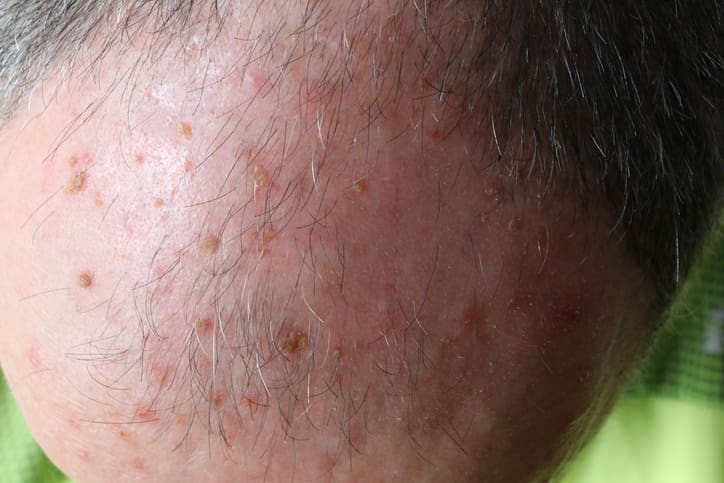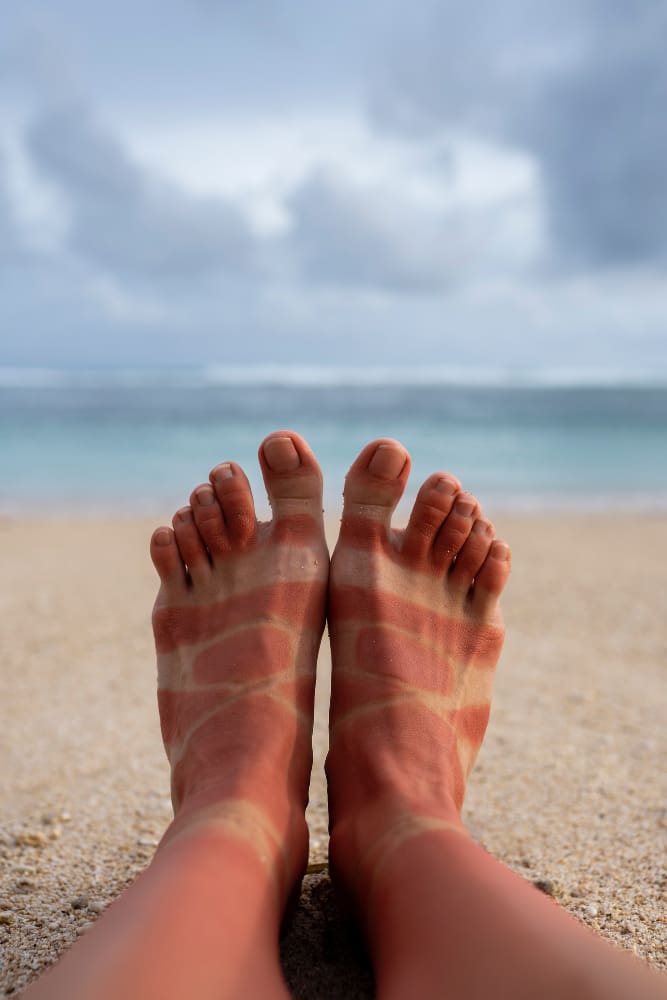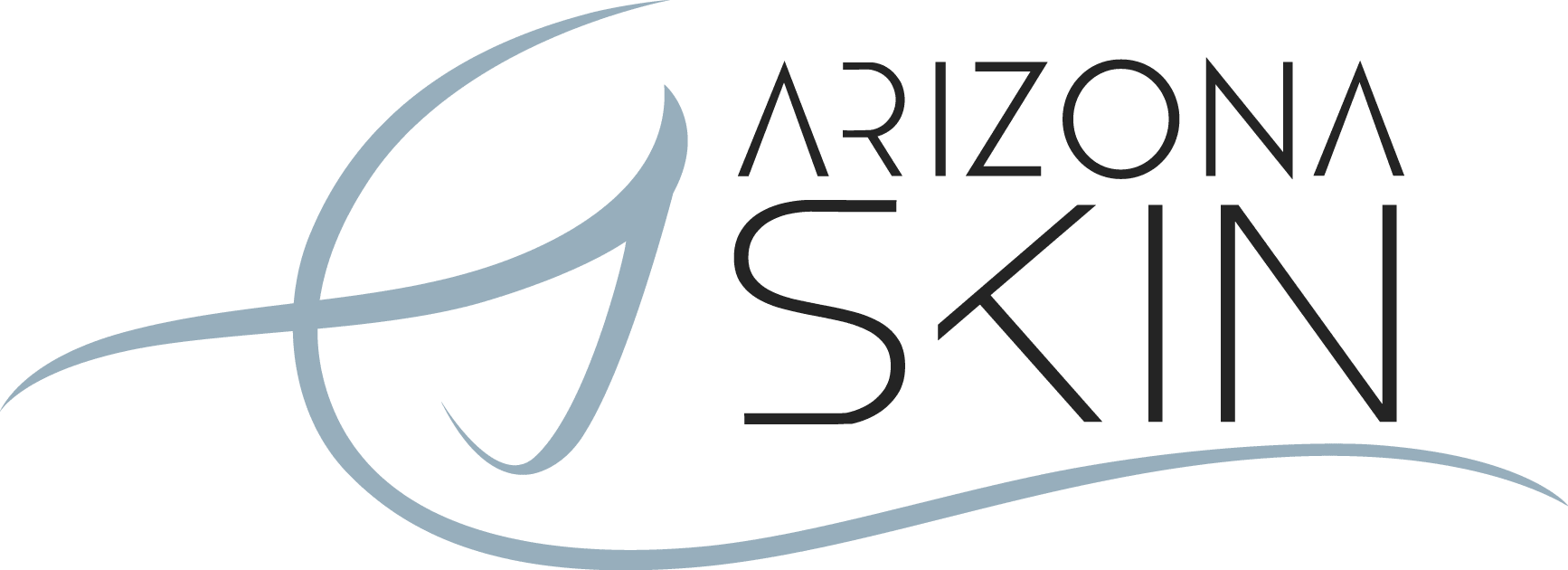Actinic Keratosis in the Greater Phoenix Area
Surprise, Buckeye & Scottsdale
Medical dermatology is an essential branch of healthcare focusing on diagnosing and treating a wide range of skin conditions. At Arizona Skin, we pride ourselves on offering comprehensive medical dermatology services to patients throughout the Greater Phoenix area, including Surprise, Scottsdale, and Buckeye. Our experienced dermatologists are equipped to address various skin issues and complex skin diseases. We understand the importance of healthy skin and are committed to providing personalized care to ensure the best possible outcomes for our patients.

What Are Actinic Keratoses?
Actinic keratosis (AK), are also known as solar keratosis, and can be considered a precancerous growth that develops on skin that has been damaged by the sun. These growths are typically rough, scaly patches that may vary in color from pink to red or brown. An AK may appear on the face, scalp, neck, back, shoulders, forearms, or other parts of the body. Typically, the affected areas will have more than one lesion (keratoses). These lesions grow slowly over time and most commonly present in patients over the age of 40. While they are not cancerous, they can potentially progress into squamous cell carcinoma, a type of skin cancer, if left untreated. Our team is highly trained in diagnosing and treating actinic keratoses.
Causes of Actinic Keratoses

Sun Exposure
The primary cause of actinic keratosis is long-term exposure to ultraviolet (UV) radiation from the sun. UV rays damage the skin cells, leading to mutations that can result in the formation of AKs. These growths typically appear on sun-exposed areas like the face, ears, scalp, chest, neck, backs of the hands, forearms, and lips.
Tanning Beds
The use of tanning beds, which emit artificial UV radiation, can also increase the risk of developing actinic keratosis, as it causes similar skin damage to that from the sun.
Fair Skin
People with fair or light skin, who burn easily and tan poorly, are more susceptible to developing AKs due to the reduced ability of their skin to protect against UV damage.
Weakened Immune System
Individuals with weakened immune systems (e.g., due to organ transplants, HIV/AIDS, or immunosuppressive medications) are at a higher risk of developing AKs, as their bodies may not repair sun damage as effectively.
Age
Actinic keratosis is more common in people over the age of 40, as prolonged sun exposure over the years accumulates and increases the risk of skin cell mutations.
History of Sunburns
A history of frequent or severe sunburns, particularly during childhood, increases the likelihood of developing actinic keratosis later in life.
Family History
A family history of skin cancer or actinic keratosis may increase the risk of developing these growths.
Signs & Symptoms of Actinic Keratoses
Appearance
AKs typically present as small, rough, scaly patches or bumps. These patches may be red, pink, or brown in color.
Size
They usually range from the size of a pinpoint to a couple inches in diameter.
Location
Common areas include the face, scalp, ears, neck, backs of hands, forearms, chest, and other sun-exposed areas.
Texture
They may feel dry, rough, flaky or scaly and sometimes itch, burn, or bleed when scratched.
Sensation
AKs may initially present with itching and may eventually become painful and feel sore.
Treatment for Actinic Keratoses
Topical Treatments
- 5-Fluorouracil (5-FU): A topical chemotherapy cream that destroys abnormal cells. It is applied to the affected area and can help to clear AKs over several weeks.
- Imiquimod: This topical treatment boosts the body’s immune system to target and destroy abnormal skin cells. It is often used for multiple lesions or larger patches of AKs.
- Tirbanibulin: A topical ointment that works by inducing cell death in precancerous cells. It is used for a short duration and is applied directly to the AKs.
- Diclofenac: This non-steroidal anti-inflammatory drug (NSAID) reduces inflammation and has been found effective in treating actinic keratosis.
Cryotherapy (Freezing)
Cryotherapy involves freezing the AKs with liquid nitrogen, causing the abnormal cells to die and eventually slough off. This method is commonly used for isolated lesions or small patches.
Laser Therapy
Laser treatments, such as fractional laser, target the abnormal skin cells and remove the upper layers of skin. Laser therapy can also improve the appearance of the skin after treatment.
Chemical Peels
Ingredients used in chemical peels can eliminate the top layer of the affected skin, thereby helping to stimulate new growth and replacing the damaged tissues
Curettage and Electrodesiccation
Curettage involves scraping away the AK growths, followed by electrodesiccation, where a small electrical current is used to destroy the remaining abnormal tissue. This method is effective for larger or thicker AKs.
Photodynamic Therapy (PDT)
Photodynamic therapy involves applying a light-sensitive solution to the affected area, which is then activated by a special light to destroy abnormal cells. PDT is effective for larger areas with multiple AKs.
Excision
In cases where the AK has shown signs of progression or if it is difficult to treat with other methods, surgical removal of the lesion may be performed.
Prevention Tips For Actinic Keratoses
Avoid Excessive Sun Exposure
Stay out of the sun between 10 AM and 4 PM, when UV rays are the strongest. Rule of thumb, if your shadow is shorter than you are then stay out of the sun.
Wear Sunscreen
Apply a broad-spectrum sunscreen with an SPF of 30 or higher daily, even on cloudy days or in winter months. Reapply every 2 hours or after swimming or sweating.
Wear Protective Clothing
Consider wearing wide-brimmed hats, sunglasses, and long-sleeved clothing to reduce sun exposure, especially on the face, neck, and arms.
Seek Shade
Whenever possible, stay in the shade to minimize direct exposure to the sun.
Regular Skin Checks
Perform regular self-exams of your skin and visit a dermatologist for routine skin checks, particularly if you have a history of sunburns, frequent sun exposure, or a weakened immune system.
When to See a Dermatologist
If you notice any suspicious changes in your skin, such as the appearance of new growths, changes in existing moles or spots, or any of the symptoms of actinic keratosis, it is important to see a dermatologist. Early diagnosis and treatment can help prevent AKs from developing into skin cancer.If you are experiencing any skin concerns or conditions, don’t hesitate to reach out to Arizona Skin. Our team of experts is here to provide you with the highest quality medical dermatology care in the Greater Phoenix area. Contact us today to schedule your appointment and take the first step towards healthier skin. We welcome patients from Scottsdale, Surprise, and Buckeye, Arizona.



